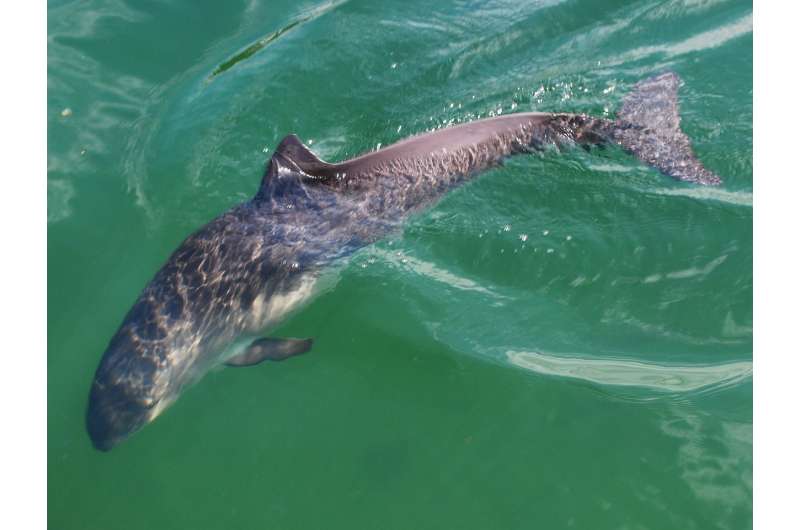Underwater noise affects marine animals' relationships. But to what extent?

Human activity at sea makes a terrible racket. To what extent does this disturb marine animals? Ph.D. candidate Annebelle Kok studied the effect on harbor porpoises, long-finned pilot whales and their prey, and discovered the sheer complexity of the problem.
The days when the sea was the preserve of fish, crabs and dolphins are long gone. In many submarine areas, there is a constant backdrop of noise: ships chugging, the thud of pile driving for offshore wind farms and the boom of seismic oil-reserve surveys. Human influence is omnipresent, and above all audible.
For her dissertation, biologist Annebelle Kok researched the effect of all this human noise on different marine mammals and their prey. Does the noise change the hunting and flight behavior of these predators and their prey change? And if so, can this disturb the balance of the ecosystem, and as a worst-case scenario, lead to species extinction?
To answer these you first need to know that long-finned pilot whales, harbor porpoises and other small toothed whales make sounds that enable them to 'see' under water. This is how they communicate with each other, for instance to attract a partner or chase away a competitor. But equally important: They use sound to find their prey. Any self-respecting harbor porpoise will gulp down 500 fish per hour, all found with the aid of echolocation.
The answer to Kok's research questions is nuanced. Background noise does appear to change some interactions between predator and prey. Gobies—the favorite snack of the harbor porpoise—are much less alert to a threat if there is a lot of background noise. Kok and her colleagues discovered this by towing a dummy predator through Grevelingenmeer (see video below). This could mean that gobies in busy areas are an easier prey for harbor porpoises than their peers who live in relatively quiet waters.
Long-finned pilot whales also behave differently in busy areas. These super-social members of the dolphin family communicate with one another by squeaking, whistling and buzzing. Transmitter data shows that long-finned pilot whales make louder sounds in noisy areas to get themselves heard above all that din, but they are still less able to hear one another. Compare it to trying to hold a conversation on the dancefloor at a night club: even if the other person shouts, you still only catch half of what they are saying.
Noise did not have any visible impact on the hunting behavior of harbor porpoises in captivity. Kok studied this by playing the 'shell game' with these intelligent marine mammals. This involved hiding bait in various parts of the pool. The porpoises were quick to locate this tasty snack, even with loud background noise, so the noise didn't seem to interfere with their echolocation.
What does this say about the disruption of the underwater ecosystem? "It's clear that the relationships between animal species are changing," says Kok. "But that is not necessarily disadvantageous. A slow goby is a gift to a harbor porpoise, so the harbor porpoise population might actually prosper. It could be that in this example human disruption has a negative effect on the prey but a positive one on the predator. We'll have to carry out further research to determine what this does with an entire ecosystem."
Provided by Leiden University



















